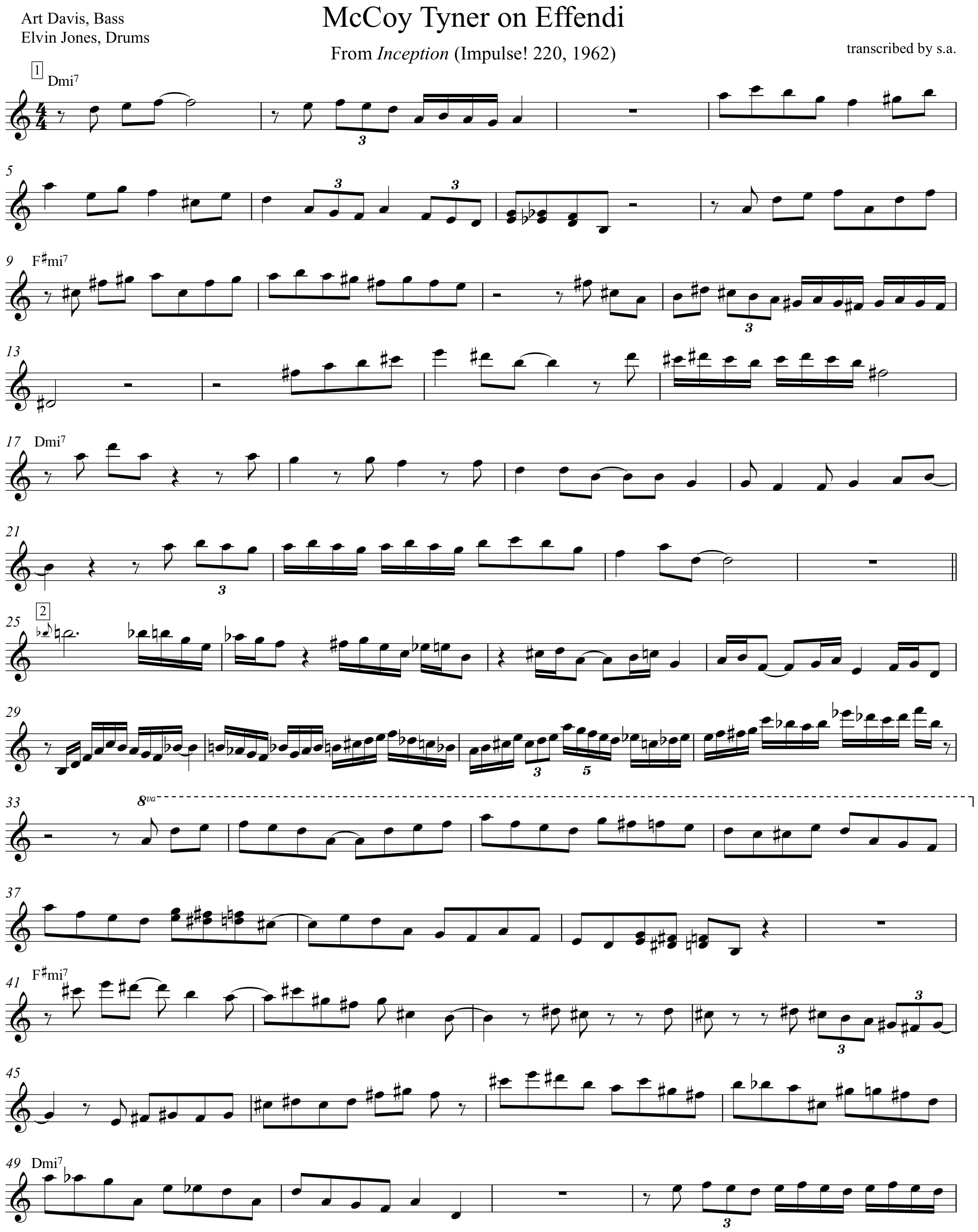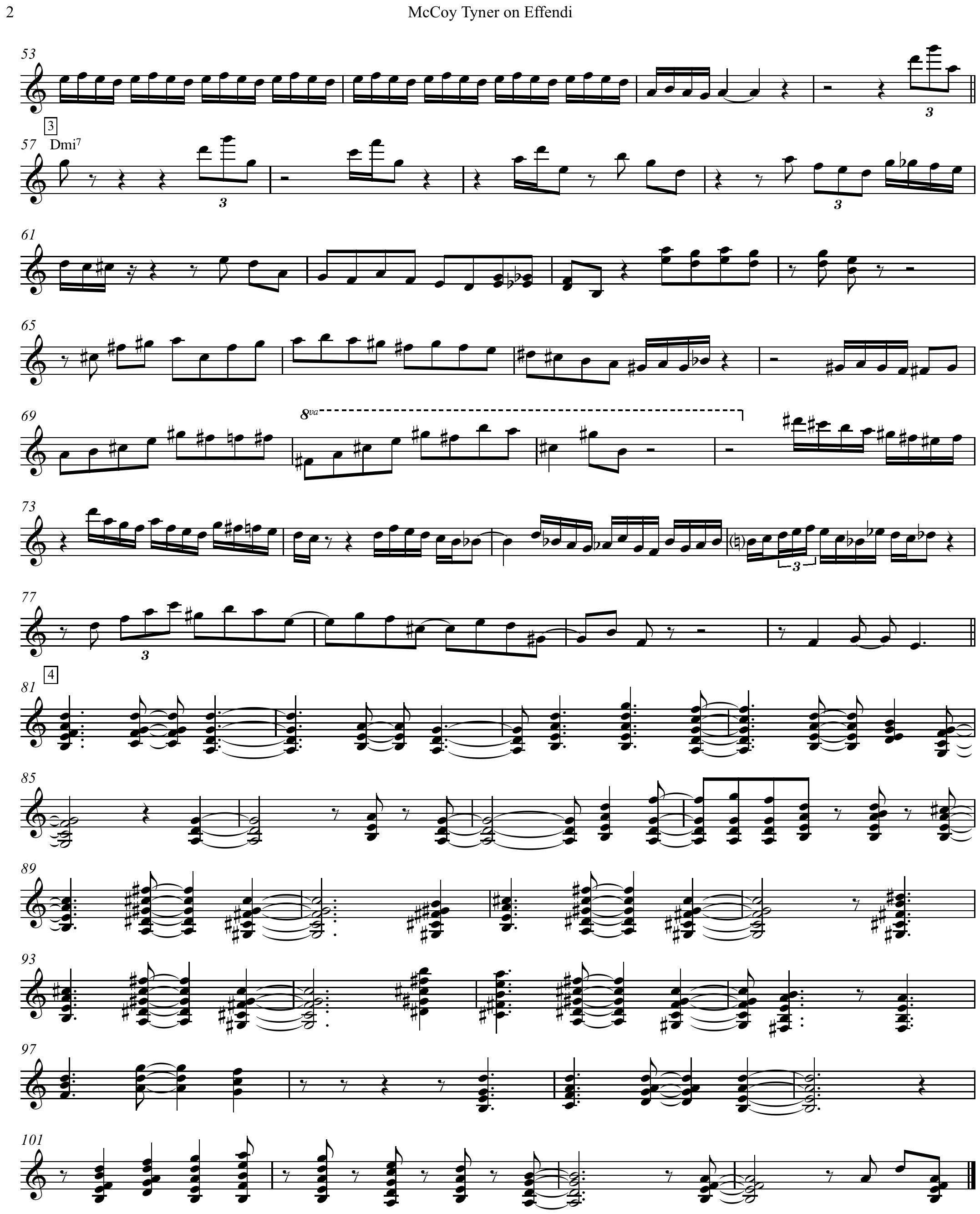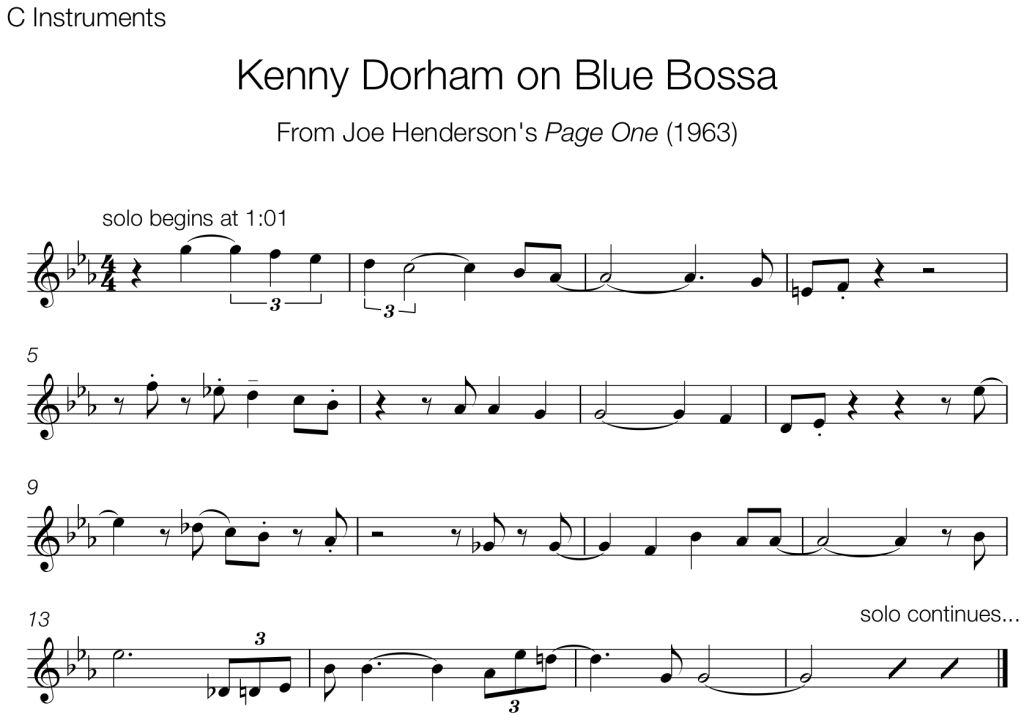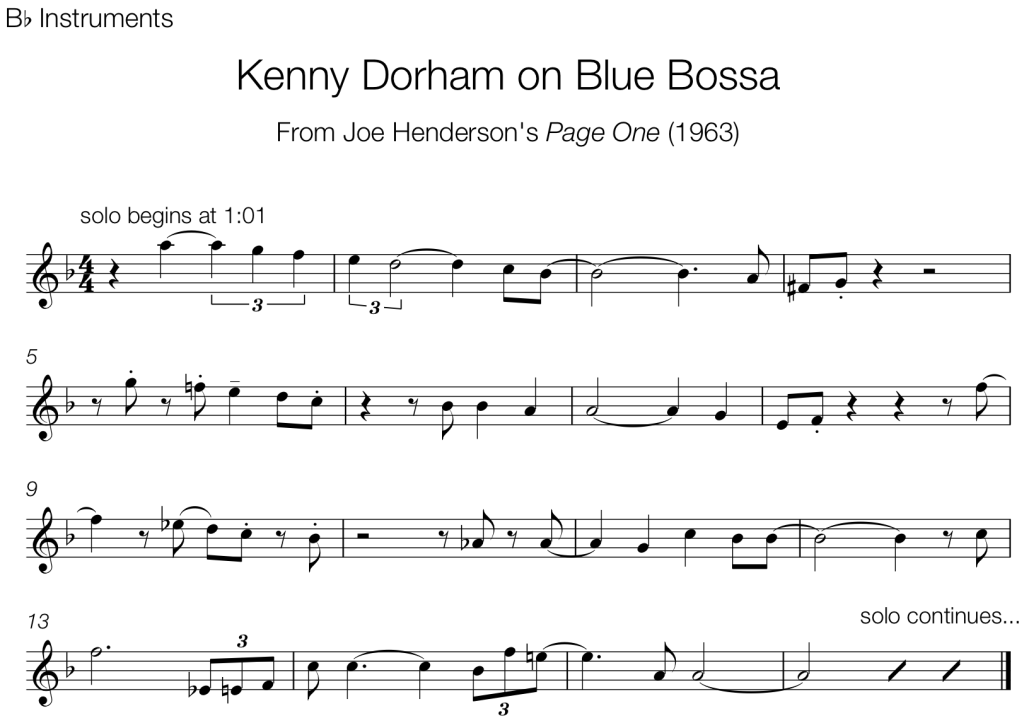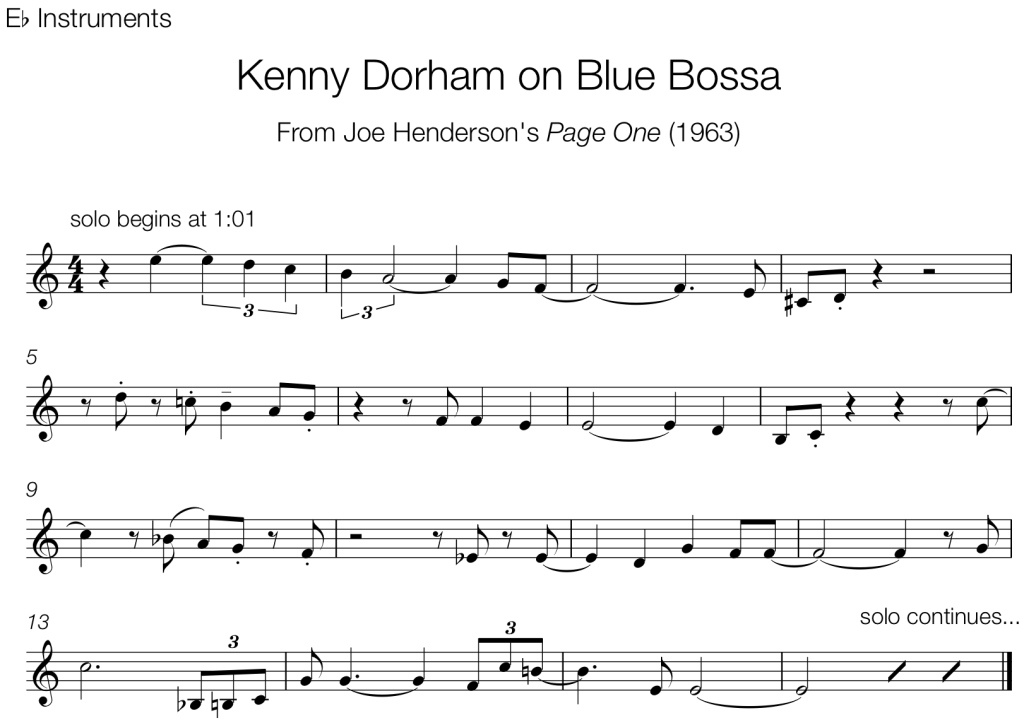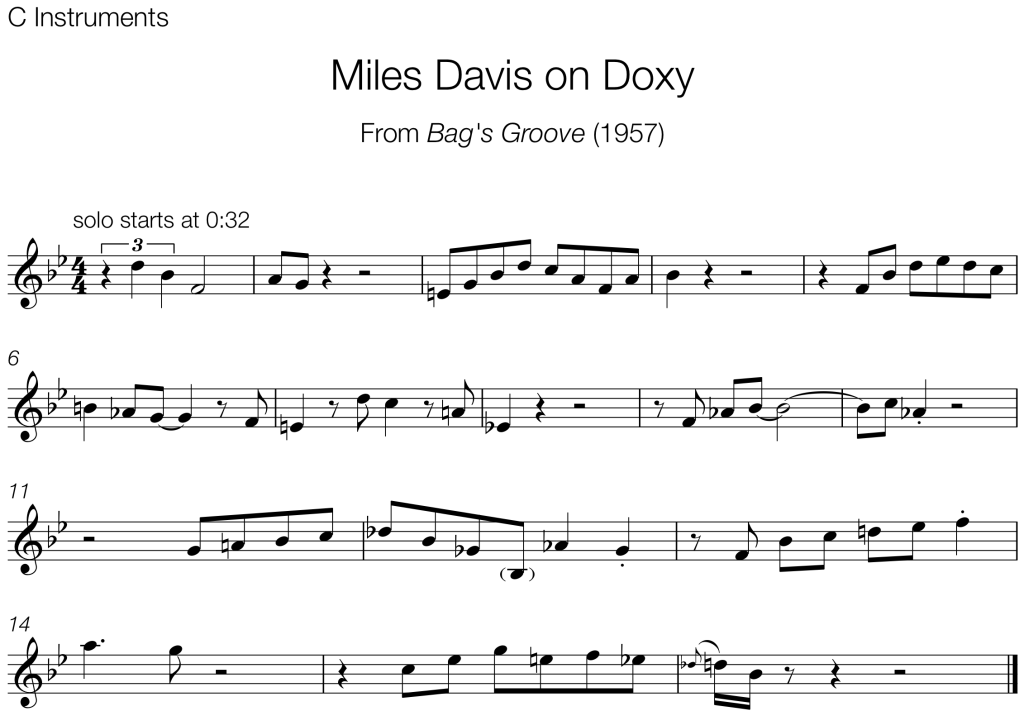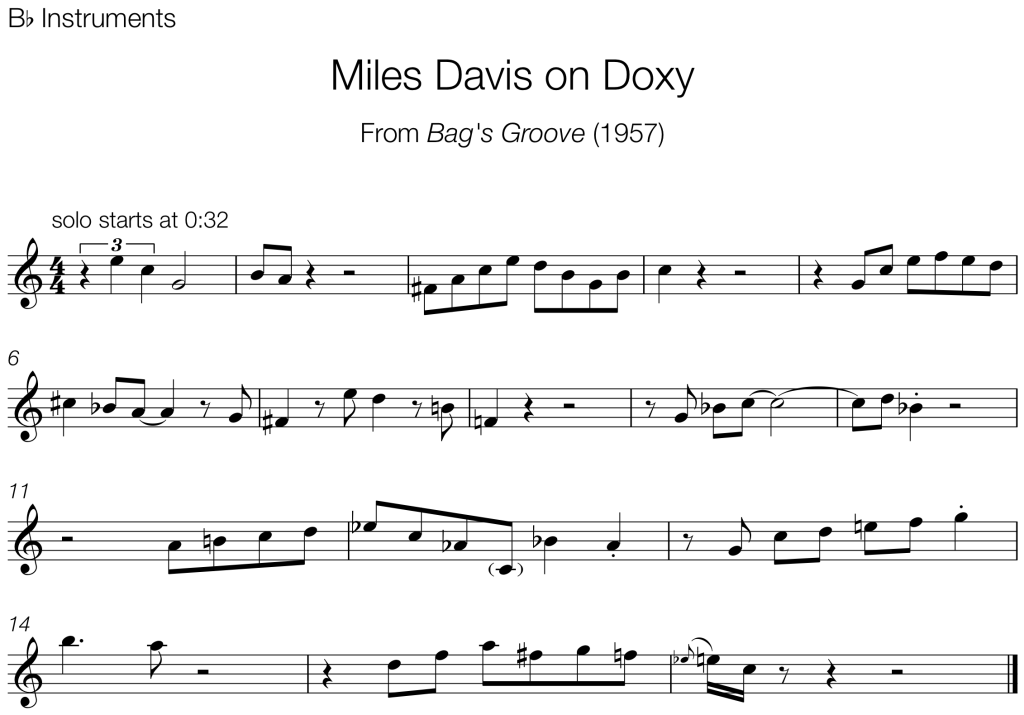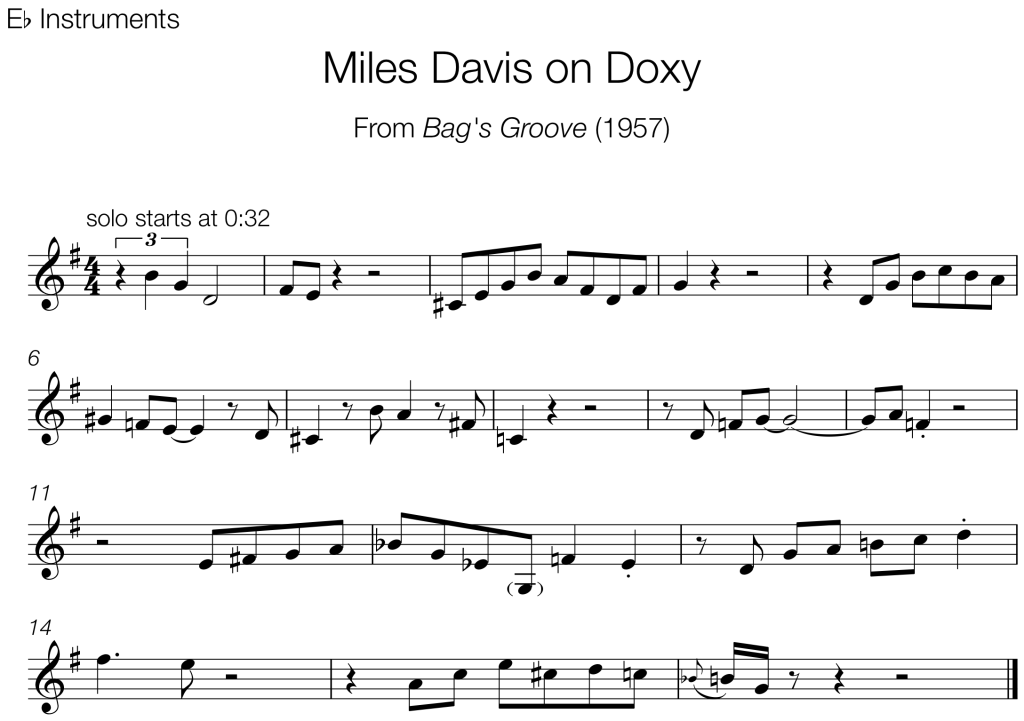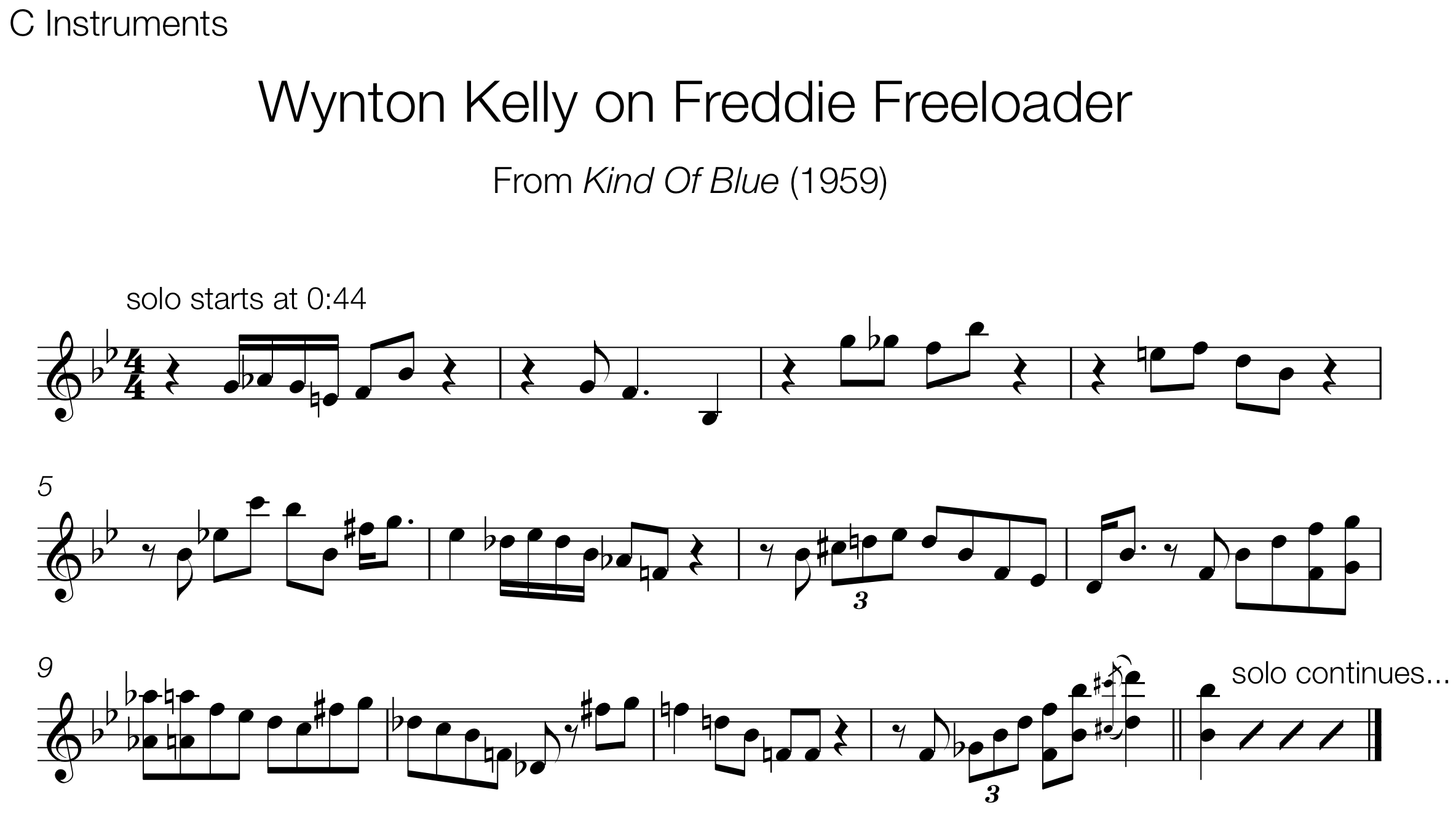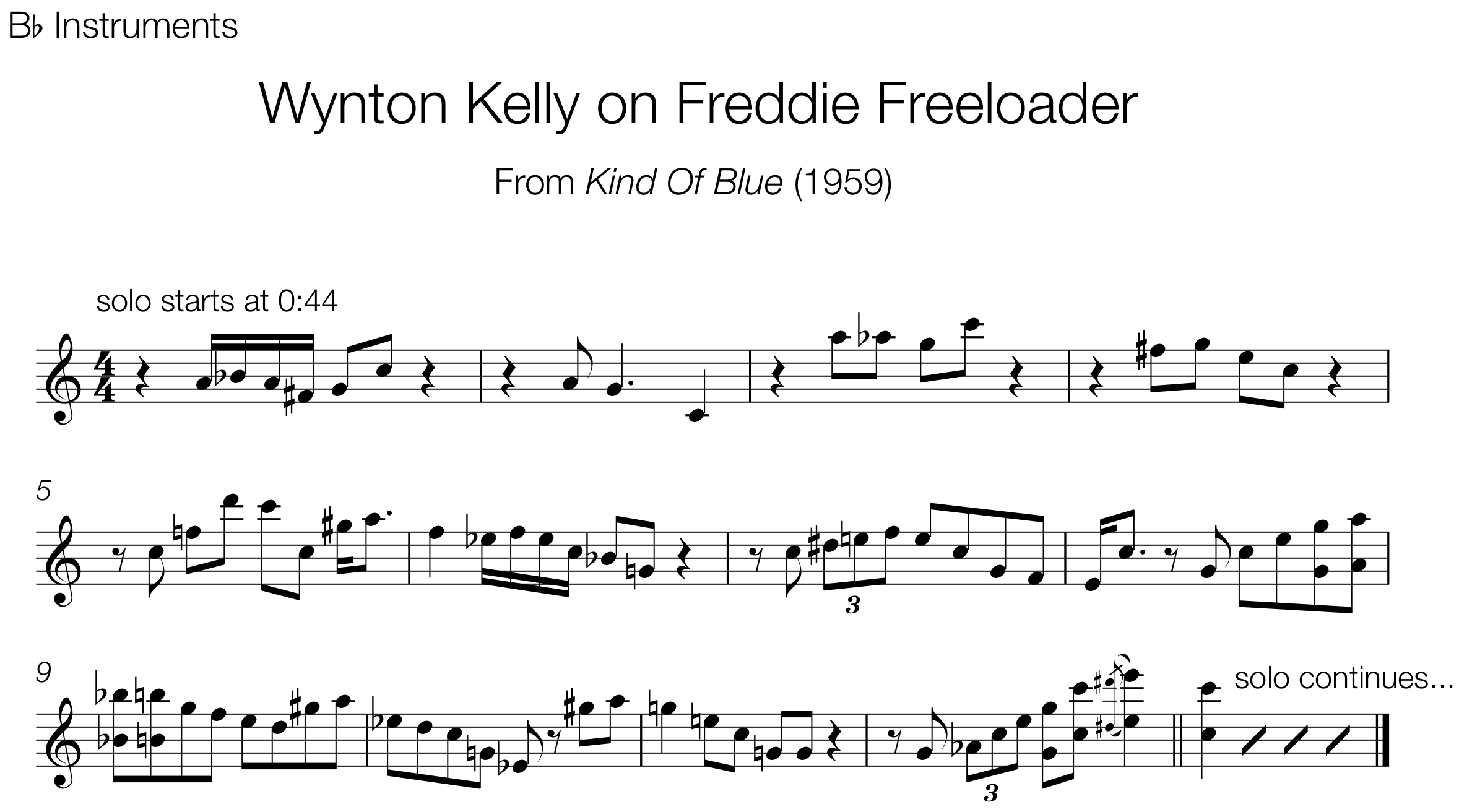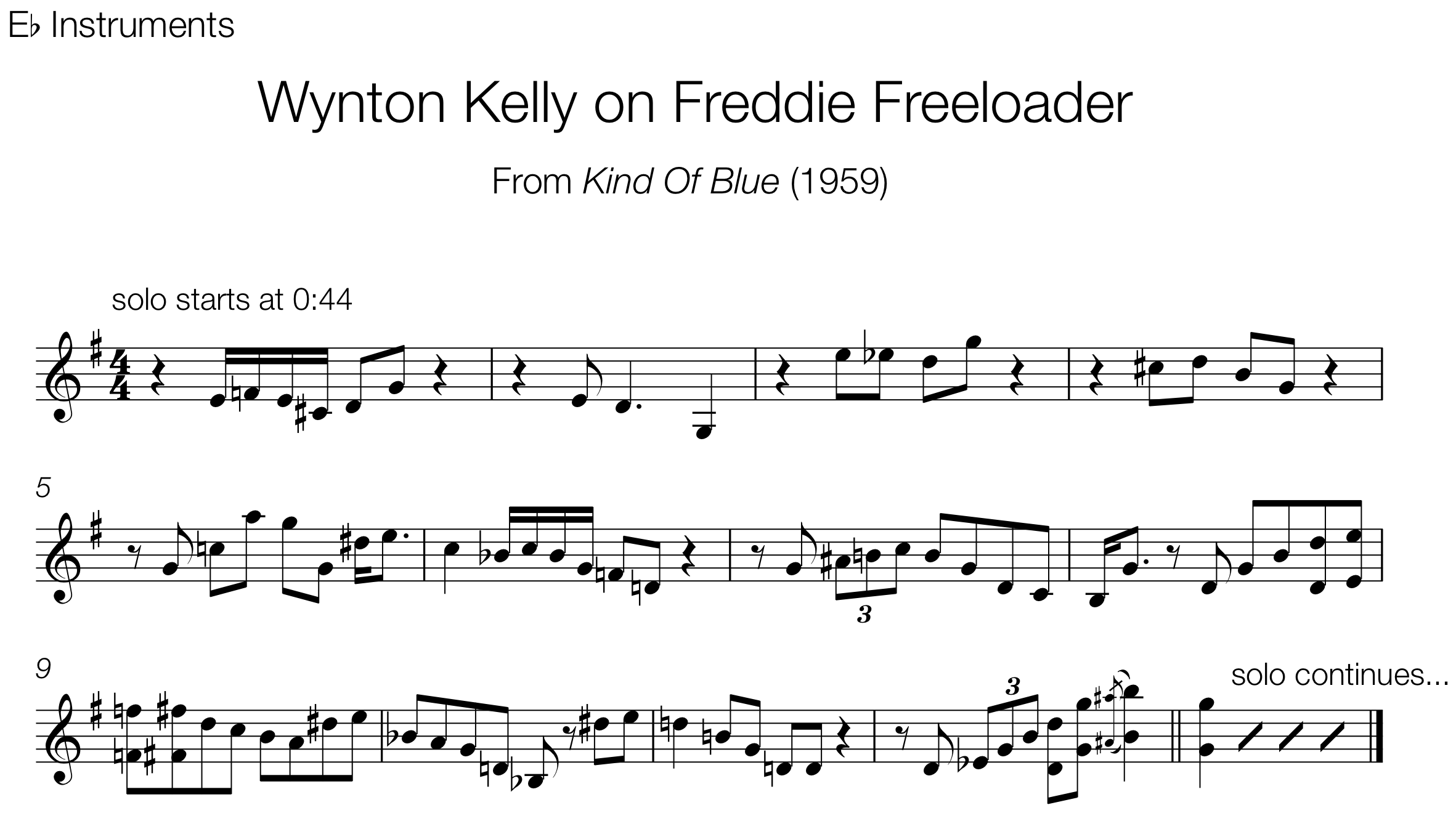McCoy Tyner’s tune Effendi from his debut album Inception (1962) is a modal tune built around D minor and F sharp minor.
Tag: Transcription Tuesday
Kenny Dorham on Blue Bossa
This week’s Transcription Tuesday is the first sixteen bars of Kenny Dorham’s solo on Blue Bossa from Joe Henderson’s debut record Page One (1963).
The tune was written by Dorham and and is the type of tune that you can always call at a jam because everyone will know it (it also tends to get groans from those who feel it has been “worn out”). The harmony is primarily in the key of C minor with bars 9-12 taking a short detour to the key of D-flat major.
If you are not already familiar with the tune, make sure to listen to the original melody in addition to checking out this solo.
I won’t spoil the surprise for those of you who haven’t heard it, but suffice to say this is definitely a solo to study if you have ever wondered how to begin improvising.
Miles Davis on Doxy
This weekend I’ll be playing in the house band for an educational jam session. It’s always a pleasure to work with students as they muster up the courage to improvise on a tune, or confidently showcase the techniques they’ve been working on.
One of our jam tunes this week will be Doxy, written by Sonny Rollins. This tune became an early jazz standard and is often one of the first tunes that beginning improvisers learn.
For this week’s Transcription Tuesday, we’ll look at the beginning of Miles Davis’ solo on Doxy from the album Bag’s Groove released in 1957 (the actual recording took place three years earlier in 1954 and features Sonny Rollins on tenor saxophone, Horace Silver on piano, Percy Heath on bass, and Kenny Clarke on drums).
If you are new to the jazz language, this is a great solo to learn and to study. You can use the steps outlined in yesterday’s How To Start Transcribing to learn the solo by ear, and then check your work against the notated version below.
Once you’ve learned the sound of the solo, try to make sense of the note choices and rhythms by studying the harmony. I didn’t include the chord changes in the transcription, but careful listening to the bass and piano on the recording will reveal the harmony (or you can surely find a chord chart online).
I find the simplicity and clarity of this excerpt inspiring and the tune overall is fun to play. I encourage you to try using some of this language in your own playing.
Wynton Kelly on Freddie Freeloader
If you are not already familiar with the album Kind of Blue by Miles Davis, do yourself a favor and go listen right now. As one of the most popular and best-selling jazz albums of all time—it went quadruple platinum in 2008—any jazz fan should at least be aware of this great work.
For this Transcription Tuesday, I chose to focus on the first chorus of the piano solo on Freddie Freeloader. While Bill Evans is the pianist for most of the album, this track features the great Wynton Kelly instead.
I love Kelly’s touch and bouncy time feel, as well as his melodic blues-based language. Pay attention to the way he uses chord tones as arrival points for the melody.
One of my favorite parts of this chorus is the final two bars. The form is generally based on a 12-bar blues in Bb, with an unusual Ab7 chord in bars 11 and 12. Kelly arpeggiates a Bb major triad over the Ab7 harmony creating a wonderful polychordal sound that can by described as Ab13#11. Once you wrap your ears around how this chord works, you will begin hearing it in countless other tunes that have been recorded since.
